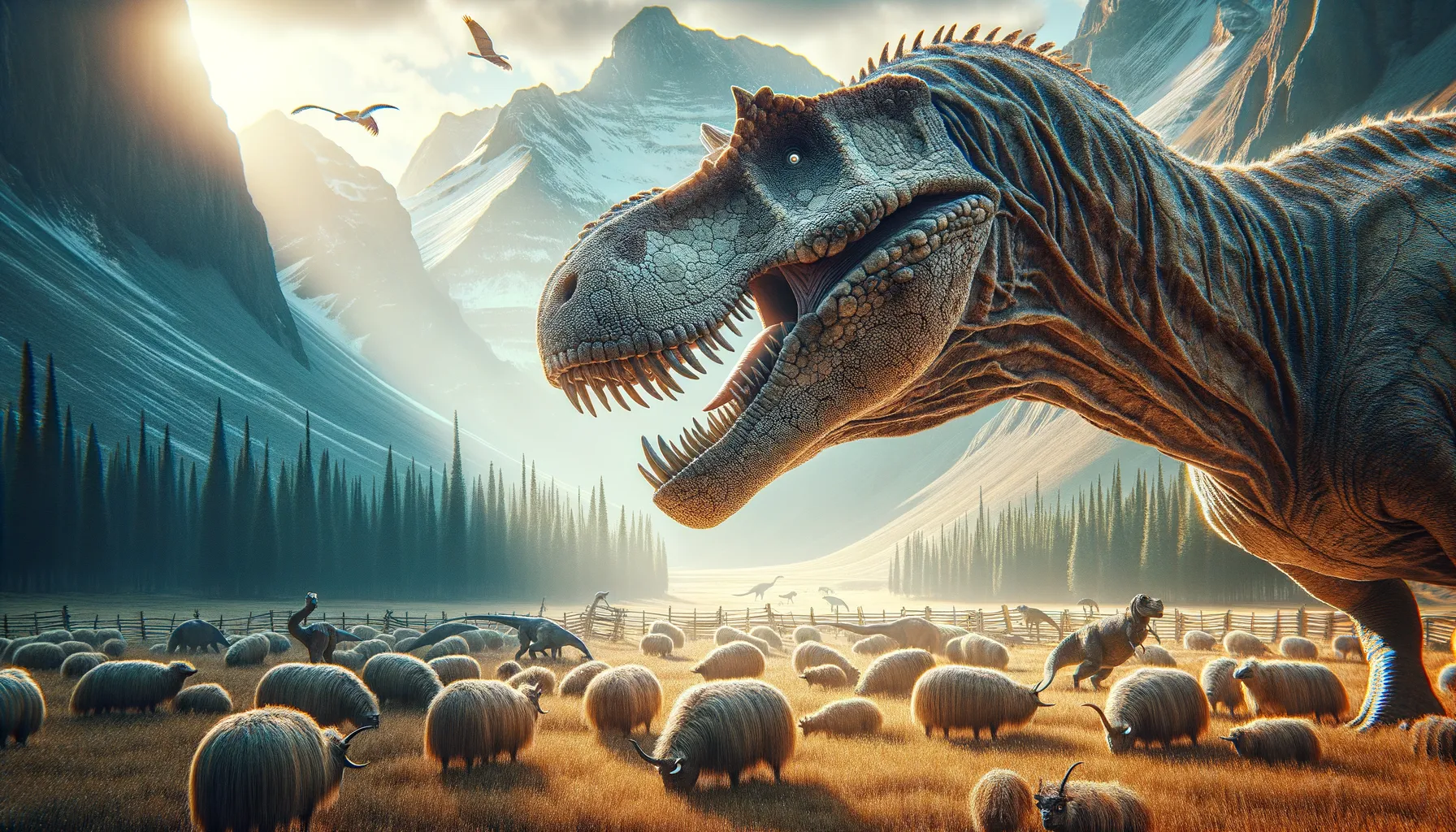
Timurlengia
Montane predator of ancient Central Asia.
Period
Cretaceous
Length
Measured approximately 4 meters in length.
Height
Stood about 1.5 meters tall at the hip.
Weight
Weighed around 200 to 300 kilograms.
Timurlengia was a mid-sized dinosaur that filled the ecological niche between giant tyrannosaurs and smaller theropods during the Cretaceous period. Initially discovered in Uzbekistan, it has helped scientists understand the evolution of advanced hearing capabilities in tyrannosaurs. Although smaller than its famous relatives like T. rex, Timurlengia was an agile predator that hunted smaller dinosaurs and other animals in its ecosystem.
Diet
Timurlengia was a carnivore, feeding on smaller vertebrates. Its diet likely included smaller dinosaurs and other animals of the Cretaceous ecosystems. Its advanced hearing was key for hunting hidden or camouflaged prey.
Hunting
This dinosaur was a predator that relied on speed and agility. It had a sharp sense of hearing to detect prey, likely exploiting its sensory advantage. Its hunting behavior included stalking and ambushing smaller animals.
Environmental challenges
Timurlengia faced a changing environment with shifting climates and habitats. It had to compete with other predators for food in its region. The adaptation of advanced sensory capabilities like hearing likely helped it to navigate and locate prey amidst dense vegetation and varying landscapes. As climate fluctuations affected resource availability, this adaptability was crucial for its survival.
Speed
It was likely a fast runner like other tyrannosaurs.
Lifespan
Estimated to be around 20 to 30 years.
First discovery
First identified from fossils found in Uzbekistan in 2016.
Fun Facts
- Timurlengia was a cousin of Tyrannosaurus rex but was much smaller, roughly the size of a horse.
- It lived about 90 million years ago during the Cretaceous period, long before its famous relative, Tyrannosaurus rex.
- Timurlengia's brain was highly developed, which suggests it was a smart predator capable of complex behaviors.
- This dinosaur was discovered in Uzbekistan, and it helps scientists understand how tyrannosaurs evolved into the massive giants they became.
- Unlike the T. rex, Timurlengia had long legs, indicating it was likely a fast runner.
- Timurlengia had finely serrated teeth, ideal for slicing through the flesh of its prey.
- Its discovery has provided important clues about the evolution and dispersion of tyrannosauroids across ancient landscapes.
Growth and Development
Timurlengia showed growth patterns typical of medium-sized theropods. It likely experienced rapid growth spurts during its juvenile phase. Reaching mature size involved skeletal adaptations for hunting efficiency. As it matured, development of sensory organs was crucial for acquiring advanced hunting capabilities.
Habitat
Timurlengia lived in diverse environments, including forests and floodplains in the region that is now Uzbekistan. Its habitat supported a wide range of other species, providing ample food sources. The Cretaceous period landscapes offered abundant vegetation, which supported the herbivorous prey it hunted. This variety in habitat allowed Timurlengia to thrive and adapt throughout its life.
Interaction with other species
Timurlengia would have coexisted with a variety of herbivorous dinosaurs, preying on smaller species. It had to compete with other predators, influencing its development and adaptation. Its presence in the ecosystem may have pressured prey species, affecting their evolution. Interaction with other species would be pivotal for the balance within its environment.
Natural lifespan
Timurlengia had a natural lifespan of about 20 to 30 years.
Reproduction
Timurlengia, like many theropods, likely laid eggs. Its reproduction would have involved nesting sites to protect and incubate the eggs. Parental care might have been minimal, with offspring being precocial and quickly capable of self-reliance. This reproductive strategy allowed for survival in a competitive environment.
Social behaviour
Timurlengia may have been solitary or lived in small groups based on environmental demands. Social behavior could have included territorial disputes with other tyrannosaurs. Cooperation in groups would have been geared towards effective hunting or scavenging. Social interactions might also have involved complex communication facilitated by their advanced auditory senses.
Fossil locations
The primary fossil remains of Timurlengia have been found in the Kyzylkum Desert of Uzbekistan. The fossils include a well-preserved braincase, which has been pivotal in understanding its evolution. The discoveries in this region provide crucial insights into the Cretaceous period of Central Asia. Ongoing excavations in the area continue to reveal more about the diverse wildlife Timurlengia encountered.
